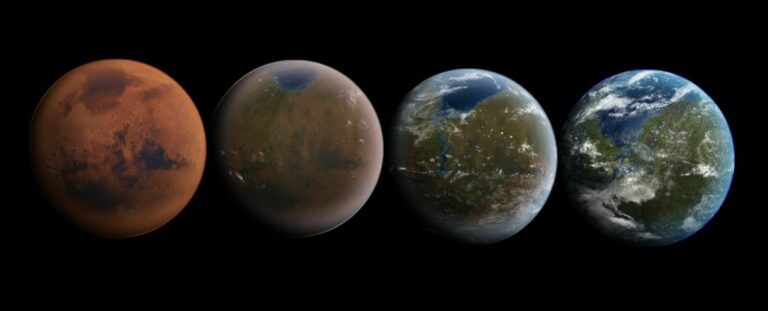Using Glitter to Blast Mars: The Most Efficient Way to Make It Habitable
If, however, it is mankind’s aspiration to eventually have sustainable settlements on Mars, radical revolutions are inevitable. Nowadays Mars can be hardly described as a friendly planet, and the conditions prevailing on the planet are not very favorable for people.
One of the most significant obstacles is the climate The climate imposes a significant form of restraint on the project. Mars has extremly low temperatures that are quite unfavorable for humans with the median temperature being -64°C (-85°F). If we want to terraform Mars, nevertheless, we need to warm it up somehow.
Academics have now developed a process that they believe is five thousand times quicker than previous techniques. A team whose leader is electrical engineer Samaneh Ansari of the Northwestern University in the US suggested that in order to warm Mars and sustain higher temperatures, tiny metal rods should be released into the Mars atmosphere to mimic the greenhouse’.
The corresponding author of the research and geophysicist at the University of Chicago, Edwin Kite adds; “You would still require millions of tons to warm the planet but that is five thousand times less than with previous proposals to warm the planet of Mars globally. This enhances the likelihood of the project. ”
It means that the obstacle to warm Mars to a state where it may have liquid water is not as difficult as one may think.

The only known technique of global warming we have is the greenhouse effect BUT as far as the case of the Earth is concerned, it is really not an easy task to generate it. Earlier methods of warming the Mars’ greenhouse include the requirement of green house effect gases such as those that affect earth and Venus green house.
In Earth, the position of greenhouse warming is surprisingly quite easy. Gases such as carbon dioxide and methane are emitted into the atmosphere and capable of holding heat energy that radiates from the surface of the earth more effectively and hencester the heat to escape into space is sealed to cause an increase in temperature.
If one could somehow fill up Mars’ sparse air with these gases, as previous plans presumed, it increases Mars’ temperature to create photosynthesis friendly environment.
But Mars does not have what it takes to bring this strategy to fruitition. We would have to bring it in huge quantities from the Earth to Mars, or extract them from beneath the surface of the Mars and this will be very costly.
So, what if we took what Mars already has and managed it? Expenditures of Martian rovers also suggest that the Martian topsoils contain metals such as aluminum and iron. The idea is to replicate solar radiation on the Mars as greenhouse gases do it on the Earth, metaphorically speaking, and what if we could throw small balls of metal into the Martian sky like in a glittering cannon?
Siamese and her team imitated these metallic needles to be dispersed in the Martian atmosphere to a size as small as the Martian dust and slightly smaller than glitter having an aspect ratio of 60:1. That is the extent to which they computed how much heat such metallic clouds would retain and how much dust would be necessary in creating and sustaining the greenhouse effect.
The size and shape of nanorods will let them remained suspended in the Martian atmosphere for ten times more than the Martian dust. At a constant rate of 30 litres per second, these nanorods melt surface ice and effect the pressure as the carbon dioxide ice undergoes sublimization.
Levels of atmospheric pressure would still go on to increase over centuries because polar carbon dioxide ice caps were vaporizing.
It would not turn Mars into a planet directly inhabitable for people since the available oxygen is already low, but it would be suitable for bacteria. They could then be introduced to kick-start a process of producing oxygen from the scratch.
The nanorod strategy was conceived to take several decades and it could potentially warm Mars more than 28 °C – to the point where microbial photosynthesis could occur – the first step towards terraforming.
However, there are a few more possible problematic aspects to consider. Pardon me, it is not evident how long the nanorods would stay in Mars’s atmosphere, though it is still shedding material to space (an endemic problem) but does not have the protection of a global magnetic field, unlike the earth.
The latter can capture water particles when Mars is getting warm to fall on the surface as rain and thus spend less time in the atmosphere. This raises a possible problem that needs further research about.
However, Kite has asserted that this research directs us to new territories of research; it might have brought us one step closer to the ideal of humanity’s colonization of Mars.
The research has been published in Science Advances.
Do not forget to share your opinion with us to provide you with the best posts !




0 Comments